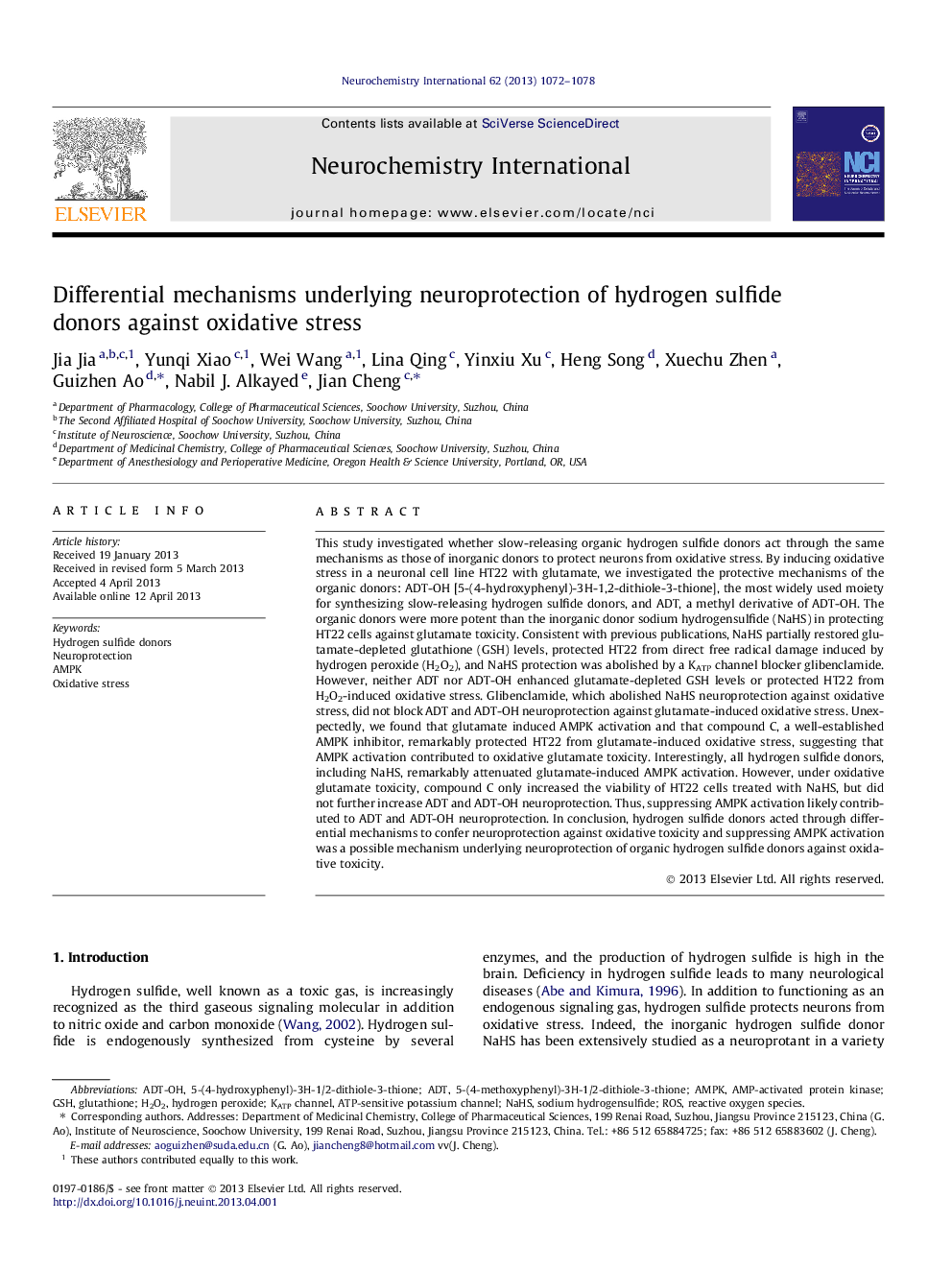| کد مقاله | کد نشریه | سال انتشار | مقاله انگلیسی | نسخه تمام متن |
|---|---|---|---|---|
| 2200667 | 1099959 | 2013 | 7 صفحه PDF | دانلود رایگان |

• ADT and ADT-OH exhibited higher potency than NaHS in the glutamate oxidative model.
• Unlike NaHS, slow-releasing donors neither restored GSH levels nor scanvenged ROS.
• Activating KATP channels did not contribute to ADT and ADT-OH neuroprotection.
• Suppressing AMPK activation contributed to ADT and ADT-OH protection.
This study investigated whether slow-releasing organic hydrogen sulfide donors act through the same mechanisms as those of inorganic donors to protect neurons from oxidative stress. By inducing oxidative stress in a neuronal cell line HT22 with glutamate, we investigated the protective mechanisms of the organic donors: ADT-OH [5-(4-hydroxyphenyl)-3H-1,2-dithiole-3-thione], the most widely used moiety for synthesizing slow-releasing hydrogen sulfide donors, and ADT, a methyl derivative of ADT-OH. The organic donors were more potent than the inorganic donor sodium hydrogensulfide (NaHS) in protecting HT22 cells against glutamate toxicity. Consistent with previous publications, NaHS partially restored glutamate-depleted glutathione (GSH) levels, protected HT22 from direct free radical damage induced by hydrogen peroxide (H2O2), and NaHS protection was abolished by a KATP channel blocker glibenclamide. However, neither ADT nor ADT-OH enhanced glutamate-depleted GSH levels or protected HT22 from H2O2-induced oxidative stress. Glibenclamide, which abolished NaHS neuroprotection against oxidative stress, did not block ADT and ADT-OH neuroprotection against glutamate-induced oxidative stress. Unexpectedly, we found that glutamate induced AMPK activation and that compound C, a well-established AMPK inhibitor, remarkably protected HT22 from glutamate-induced oxidative stress, suggesting that AMPK activation contributed to oxidative glutamate toxicity. Interestingly, all hydrogen sulfide donors, including NaHS, remarkably attenuated glutamate-induced AMPK activation. However, under oxidative glutamate toxicity, compound C only increased the viability of HT22 cells treated with NaHS, but did not further increase ADT and ADT-OH neuroprotection. Thus, suppressing AMPK activation likely contributed to ADT and ADT-OH neuroprotection. In conclusion, hydrogen sulfide donors acted through differential mechanisms to confer neuroprotection against oxidative toxicity and suppressing AMPK activation was a possible mechanism underlying neuroprotection of organic hydrogen sulfide donors against oxidative toxicity.
Journal: Neurochemistry International - Volume 62, Issue 8, June 2013, Pages 1072–1078